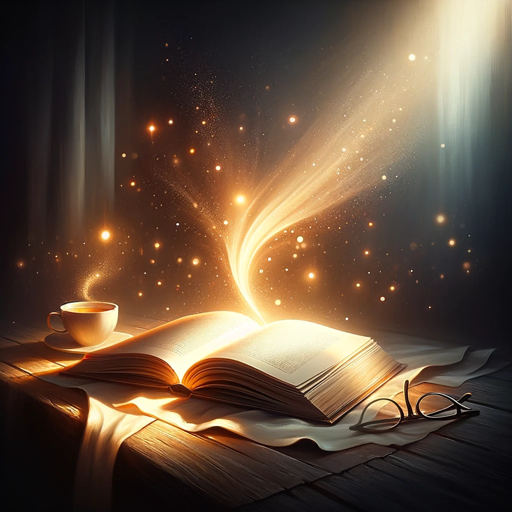Art History GPT-art history insights, resources.
AI-powered insights into art history.
Tell me about the Renaissance.
Who was Frida Kahlo?
Explain the significance of Impressionism.
Describe Van Gogh's style.
Related Tools
Load More
HistoryGPT
Only uses reputable sources, cross-references them.
AI Art Critic GPT
Art analyst, DALL-E prompter, and snooty critic

PixelArt GPT
Create Pixel Art images for anything you can imagine

Art Professor
An college-level art professor offering advanced guidance and critiques. Non-Monetized, completely free. Please feel free to send feedback with suggestions for improvement!

Paint GPT
Painting characters from classic and modern literature

Better Art History Teacher - AP Art History
Your new teacher and tutor
20.0 / 5 (200 votes)
Introduction to Art History GPT
Art History GPT is a specialized AI model designed to provide comprehensive information and insights into the field of art history. This model is optimized for offering detailed coverage of various art movements, famous artworks, and biographies of renowned artists. Art History GPT serves art students, educators, and enthusiasts by delivering in-depth analysis and contextual understanding of the evolution of art and its cultural impact. For example, an art student researching the Baroque period can use Art History GPT to gain insights into the stylistic characteristics, major artists like Caravaggio and Bernini, and the historical context that shaped the movement.

Main Functions of Art History GPT
Art Movement Analysis
Example
Providing detailed explanations of the characteristics and significance of art movements such as the Renaissance, Impressionism, or Surrealism.
Scenario
An educator preparing a lecture on Impressionism can use Art History GPT to access comprehensive information about its origins, key figures like Claude Monet and Edgar Degas, and the impact it had on subsequent art movements.
Artwork Examination
Example
Offering in-depth analyses of specific artworks, including their composition, technique, symbolism, and historical context.
Scenario
An art enthusiast curious about Vincent van Gogh's 'Starry Night' can use Art History GPT to understand the painting's swirling patterns, the emotional state of the artist at the time, and its place in the Post-Impressionist movement.
Artist Biographies
Example
Providing detailed biographies of renowned artists, highlighting their life events, artistic evolution, and contributions to the art world.
Scenario
A researcher writing a paper on Frida Kahlo can use Art History GPT to gather information about her early life, her tumultuous relationship with Diego Rivera, and how her personal struggles influenced her surreal and deeply personal artwork.
Ideal Users of Art History GPT
Art Students
Art students at various educational levels would benefit from using Art History GPT for its detailed and accessible information on art movements, techniques, and artist biographies, aiding them in their studies and research projects.
Art Educators
Art educators can utilize Art History GPT to enhance their teaching materials with accurate and comprehensive content, supporting their lesson plans and providing a rich resource for answering student inquiries.
Art Enthusiasts
Art enthusiasts and hobbyists who have a keen interest in learning more about art history can use Art History GPT to explore various aspects of the art world, deepening their understanding and appreciation of art through detailed analyses and historical context.

Guidelines for Using Art History GPT
1
Visit aichatonline.org for a free trial without login, also no need for ChatGPT Plus.
2
Familiarize yourself with the tool's interface and available features, ensuring you understand how to navigate and input your queries effectively.
3
Prepare your specific art history questions or topics of interest, focusing on details such as art movements, artist biographies, or specific artworks for more precise responses.
4
Input your queries using clear and concise language to receive the most accurate and comprehensive information.
5
Review the responses and use the information provided for your research, academic work, or personal knowledge enhancement. Utilize any tips or additional resources suggested by Art History GPT for further exploration.
Try other advanced and practical GPTs
Midjouney Prompt Tools
Transform your ideas into stunning visuals with AI-powered precision.

Tech Advisor
AI-Powered Technical Solutions for Everyone

Management Information Systems Pro
AI-Powered MIS Solutions for Everyone

Assistente Tributário
AI-powered Brazilian tax assistant

BidGPT
AI-powered job proposal tool

Tabelle Master
Custom HTML tables powered by AI.

Oberarzt Innere Medizin
AI-powered internal medicine expertise.

Real Logo Creator
AI-powered logo design made easy.

B2B SaaS Sales Coach & Mentor
AI-Powered Sales Optimization

Toxic Boyfriend
Experience AI-powered toxic relationship simulations.

NSFW AI Art Generator
AI-Powered Custom NSFW Art Creation

Fitness
AI-powered Fitness Guidance

- Study Aid
- Research Tool
- Art Analysis
- Knowledge Base
- Educational Resource
Art History GPT Q&A
What types of questions can I ask Art History GPT?
You can ask about various art movements, detailed analyses of specific artworks, biographies of renowned artists, and the cultural impact of art. The tool provides in-depth, comprehensive responses tailored to your specific queries.
How can Art History GPT assist with academic research?
Art History GPT can provide detailed historical contexts, explain artistic techniques, and offer insights into the significance of art in society. This information can be invaluable for writing research papers, preparing presentations, or enhancing your understanding of art history topics.
Can I use Art History GPT for lesson planning or teaching?
Yes, Art History GPT is an excellent resource for educators. It can provide detailed information and explanations that can be used to create lesson plans, educational materials, and engage students in discussions about art history.
What makes Art History GPT different from other AI tools?
Art History GPT specializes in art history, offering comprehensive coverage of art movements, famous artworks, and artist biographies. It is designed to provide in-depth insights, making it an invaluable resource for art students, educators, and enthusiasts.
Is Art History GPT suitable for beginners?
Absolutely. Art History GPT caters to all levels of knowledge, providing clear and detailed explanations that can help beginners learn about art history while also offering in-depth analysis for more advanced users.